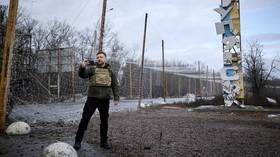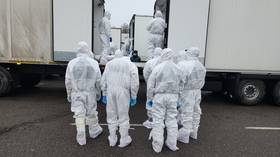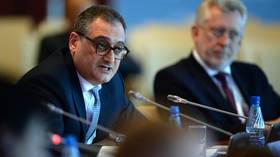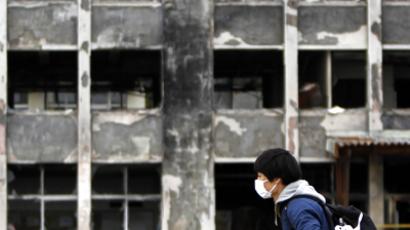Nuclear station insider says San Onofre should stay closed

A safety engineer from the San Onofre nuclear power plant has warned that “there is something grossly wrong” with the plant and that it faces the prospect of a full or partial meltdown if it is restarted
The safety engineer, who has worked in the nuclear field for 25 years, told ABC 10 that due to broken tubes carrying scalding water, there could easily be a main steam line break, which would cause the nuclear reactor core to overheat and result in a Fukushima-like meltdown.
The Los Angeles City Council last week demanded that the Nuclear Regulatory Commission refrain from making a decision about restarting the San Onofre unit until it conducts a “prudent, transparent and precautionary” investigation. Days after the unanimous city council decision, an insider from the San Onofre plant spoke to the media for the first time about the dangers associated with a restart.
"There is something grossly wrong," the inside source told ABC, asking for anonymity because of fears for his safety.
Dr. Joe Hopenfeld, a former NRC employee, mirrored the insider’s fears, claiming that the manufacturer of San Onofre’s generators did not have experience in sizing the unit for the plant. In 2010 and 2011, San Onofre paid the Japanese manufacturer Mitsubishi Heavy Industries (MHI) to build replacement generators, which were shut down in just 11 months due to a radiation leak.
"The manufacturer didn't have experience in this size unit," Hopenfeld told ABC. "I have reviewed thousands of pages of assessment and reports that Edison has submitted."
Due to the leak, officials also discovered problems with the generator tubes carrying the hot water to and from the reactor core, which creates steam that turns the turbines and creates energy. The tubes operate under high pressure and are placed in rows, very close to one another. There is no protection between the tubes, resulting in many of them to hit each other and crack.
An NRC report found that of the 19,400 tubes, more than 17 percent were damaged. The cracking caused several tube failures, and the worst case scenario is a main steam line break, Hopenfeld and the insider explained.
"Many tubes, and I don't know how many, have exhausted their fatigue life - they have no fatigue life left," Hopefeld said.
With a main steam line break, the reactor core can quickly overheat and cause a Fukushima-like nuclear meltdown that would endanger the lives of those near the plant, which is located in San Diego County, Southern California.
"If an accident like this happens, (an) emergency plan is not geared to handle such a public safety devastation," the inside source said. "Those things have never been practiced or demonstrated in a drill scenario."
Officials at Southern California Edison, which owns the plant, have proposed a solution for a partial restart of the plant, claiming that operating Unit 2 at 70 percent capacity would ensure its safety by reducing the vibrations of the generator tubes. But Hofenfeld and the insider believe this would only reduce the risk – not diminish it.
"Maybe the vibrations wouldn't be as severe, but it doesn't mean they are going away," Hopenfeld said.
"I am not trying to scare anybody -- you can live there, but you should know what the risk is," he added.
In the coming weeks, the NRC is expected to make a decision on whether or not the San Onofre nuclear power plant should be allowed to partially restart its operations. It has been out of service since January 2012.















